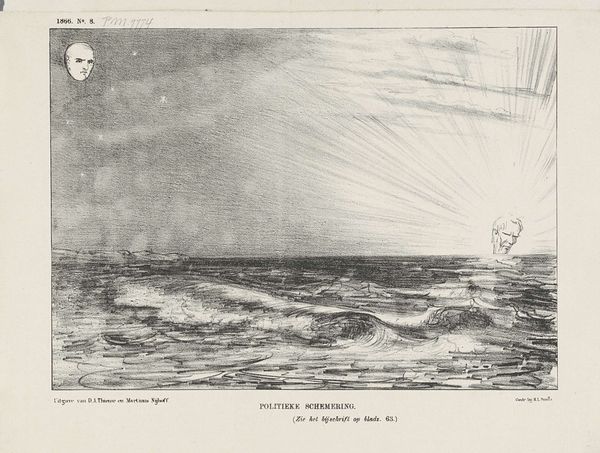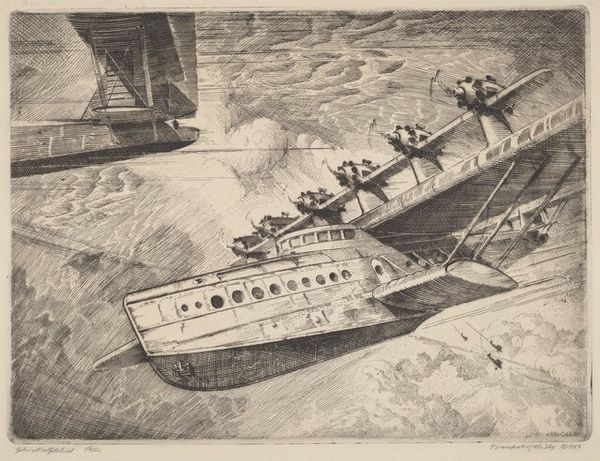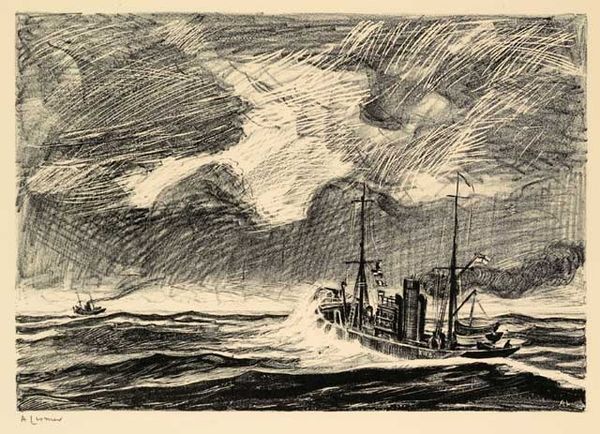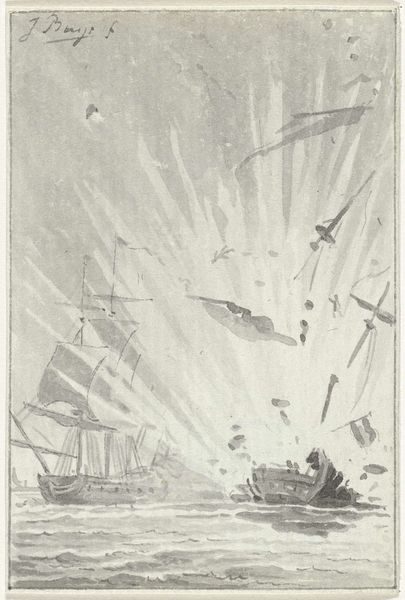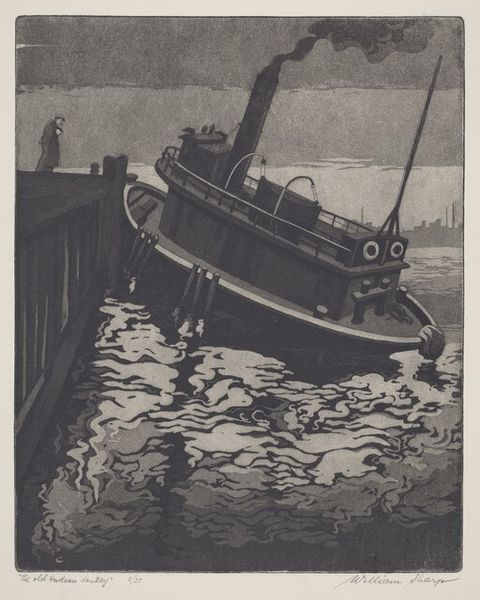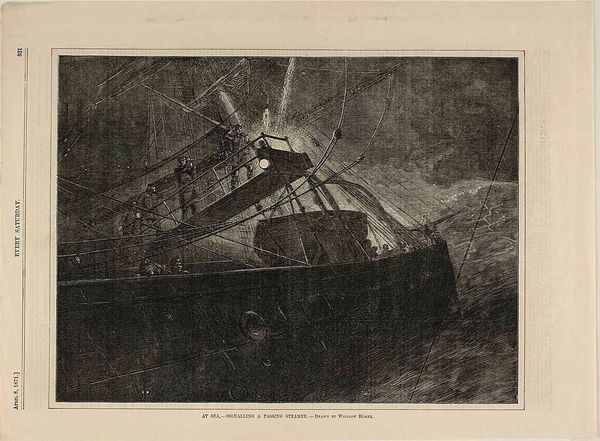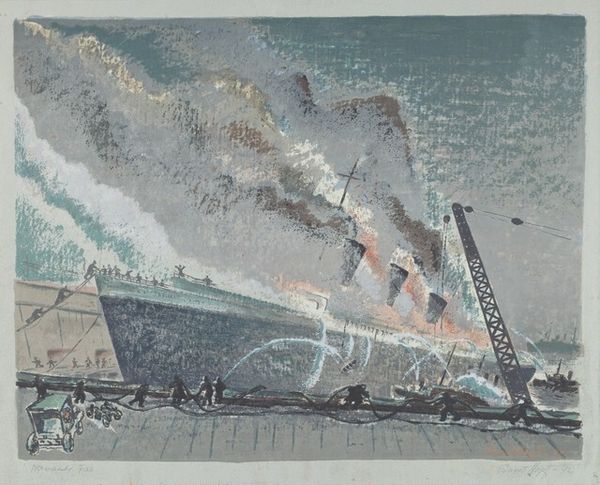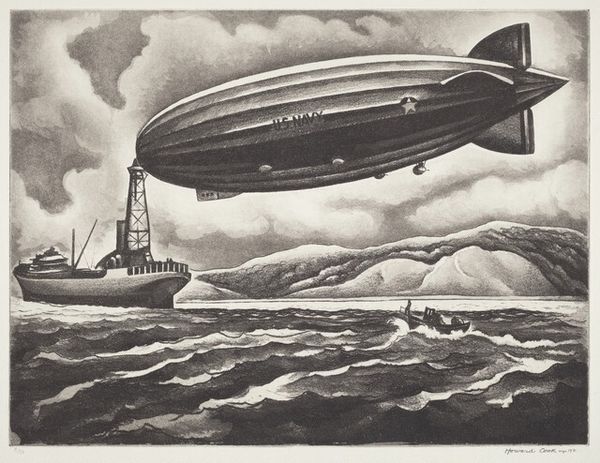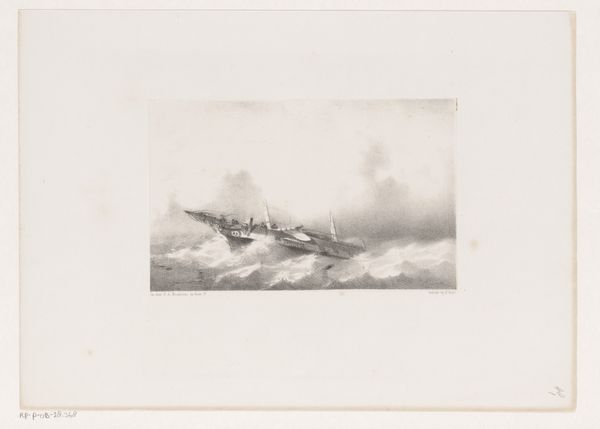
drawing, print, pencil
#
pencil drawn
#
drawing
# print
#
landscape
#
figuration
#
pencil drawing
#
pencil
#
line
#
realism
Dimensions: Image: 264 x 414 mm Sheet: 402 x 581 mm
Copyright: National Gallery of Art: CC0 1.0
Curator: This is "Speed Boat" by Mabel Wellington Jack, created in 1937. It appears to be a pencil drawing reproduced as a print. What are your initial thoughts on this artwork? Editor: My first impression is… dramatic. The strong diagonal lines of light, contrasted with the dark boat, create a very theatrical feel. It's a bit foreboding, almost melodramatic. Curator: It’s interesting that you read it that way. I think about the cultural context of 1937. This was a time of technological fascination mixed with anxieties about rapid change and looming war. Speedboats and airplanes, like the one depicted here, represented both progress and potential destruction. Editor: I see your point about technological ambivalence. The presence of both the plane and the boat really emphasizes that duality, especially as they appear within a natural, somewhat turbulent setting. It feels as if human ambition is in stark contrast to the power of nature. But who is really in control in this piece? Curator: It's tempting to examine how the construction of gender and race plays a role in who is at the wheel. If you zoom in, there appears to be only one occupant; perhaps Mabel Wellington Jack’s commentary on class and capitalism in the interwar era is a focus on male mobility, privilege and excess during this time? Editor: It could also represent individual agency in a time of widespread uncertainty. The lone figure on the boat seems to be heading somewhere specific, although the final destination is still partially in the shadows and partially illuminated by the beaming light. What message does it evoke to have both mechanical methods of travel juxtaposed against birds, nature's "original" travel? Curator: Thinking about it from a feminist perspective, it might be valuable to explore the ways that Mabel Wellington Jack challenges and affirms norms about labor by depicting the absence of female participation. The choice to depict what would seemingly only be men during this period certainly provokes questions. Editor: Ultimately, this piece feels relevant beyond its historical context. It seems to address enduring themes of ambition, progress, and humanity's relationship with nature, issues that still resonate profoundly today. Curator: Agreed. And understanding the sociopolitical climate of its creation deepens our appreciation for its continued impact and pertinence in current cultural discourse.
Comments
No comments
Be the first to comment and join the conversation on the ultimate creative platform.

